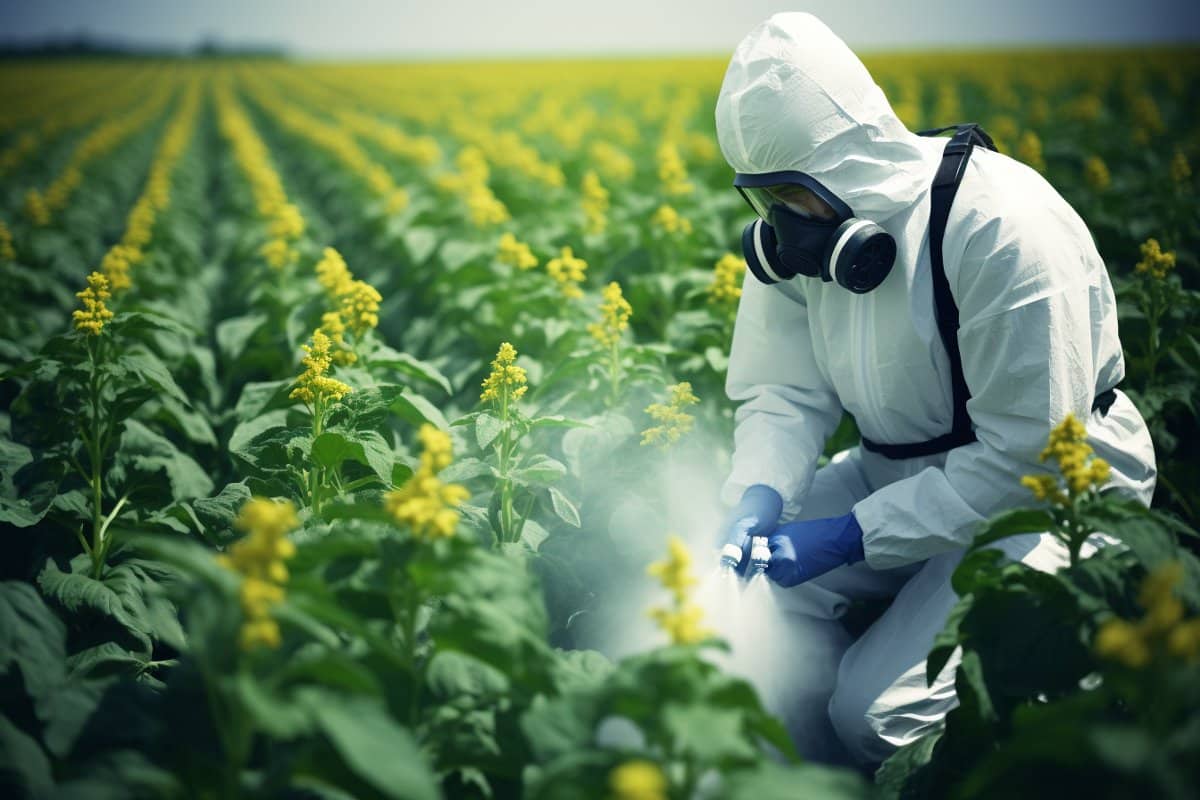Summary: Herbicides, notably glyphosate and 2,4-D, have been associated with adverse effects on adolescent brain function, according to researchers.
Findings show the ubiquitous presence of these herbicides in the urine of adolescents in Pedro Moncayo, Ecuador, and associate higher herbicide concentrations with poorer neurobehavioral performance.
This substantial research within the ESPINA study potentially correlates worldwide surges in youth chronic diseases and mental health disorders with neurotoxic environmental contaminants.
The revelation heightens concerns regarding the global increase in herbicide use and the impacts of diverse chemicals on various life stages.
Key Facts:
- Widespread Exposure: Glyphosate and 2,4-D were found in the urine of 98% and 66% of participants, respectively, indicating substantial exposure among adolescents in agricultural regions.
- Negative Associations: Higher concentrations of 2,4-D correlated with lower neurobehavioral performance in several areas, while glyphosate was significantly associated with decreased social perception.
- Global Concern: Given the pervasive use of herbicides globally, particularly following the introduction of herbicide-resistant crops, this study highlights potential worldwide implications for adolescent cognitive health.
Source: UCSD
Herbicides are the most used class of pesticides worldwide, with uses in agriculture, homes and industry. Exposures to two of the most popular herbicides were associated with worse brain function among adolescents, according to a study led by researchers at the Herbert Wertheim School of Public Health and Human Longevity Science at University of California San Diego.
In the Oct. 11, 2023 online issue of Environmental Health Perspectives, the researchers reported measuring metabolite concentrations of two commonly used herbicides — glyphosate and 2,4-dichlorophenoxyacetic acid (2,4-D) — and the insect repellent DEET in urine samples collected in 2016 from 519 adolescents, aged 11 to 17, living in the agricultural county of Pedro Moncayo, Ecuador.

Researchers also assessed neurobehavioral performance in five areas: attention and inhibitory control, memory and learning, language, visuospatial processing, and social perception.
“Many chronic diseases and mental health disorders in adolescents and young adults have increased over the last two decades worldwide, and exposure to neurotoxic contaminants in the environment could explain a part of this increase,” said senior author Jose Ricardo Suarez, M.D., Ph.D., M.P.H., associate professor in the Herbert Wertheim School of Public Health.
Among the findings:
- Glyphosate, a nonselective herbicide used in many crops, including corn and soy, and for vegetation control in residential settings, was detected in 98 percent of participants.
- 2,4-D, a broadleaf herbicide used on lawns, aquatic sites, and agricultural crops, was detected in 66 percent of participants.
- Higher amounts of 2,4-D in urine were associated with lower neurobehavioral performance in the domains of attention and inhibitory control, memory and learning, and language.
- Glyphosate concentration in urine was associated with lower scores in social perception only, while DEET metabolites were not associated with neurobehavioral performance.
Following the introduction of genetically modified, glyphosate-resistant “Roundup-ready” crops in 1996 and 2,4-D resistant crops in 2014, there have been substantial increases in glyphosate and 2,4-D use, making them the most widely used herbicides in the world, wrote the authors.
“There is considerable use of herbicides and insecticides in agricultural industries in both developed and developing nations around the world, raising exposure potential for children and adults, especially if they live in agricultural areas, but we don’t know how it impacts each stage of life,” said first author Briana Chronister, doctoral candidate in the UC San Diego – San Diego State University Joint Doctoral Program in Public Health.
Previous studies have linked exposure to some of the most used insecticides to altered neurocognitive performance while other insecticides may also affect mood and brain development. Today, 20 percent of adolescents and 26 percent of young adults have diagnosable mental health conditions such as anxiety, depression, impulsivity, aggression or learning disorders.
The authors reported that 2,4-D was negatively associated with performance in all five neurobehavioral areas, but statistically significant associations were observed with attention and inhibitory control, memory and learning, and language.
Glyphosate had a significant negative association only with social perception, a test that measures the ability to recognize emotions, while DEET metabolites were not associated with neurobehavioral alterations.
“Hundreds of new chemicals are released into the market each year, and more than 80,000 chemicals are registered for use today,” said Suarez. “Sadly, very little is known about the safety and long-term effects on humans for most of these chemicals. Additional research is needed to truly understand the impact.”
This research is a study within ESPINA: The Study of Secondary Exposures to Pesticides Among Children and Adolescents, a prospective cohort study funded by the National Institute of Environmental Health Sciences, part of the National Institutes of Health, the National Institute of Occupational Safety and Health, and other private funding sources. ESPINA aims to understand the effect of pesticide exposures on the development of humans from childhood thru adulthood.
In 2022, Suarez and his team completed year 14 of follow-up of study participants with plans to evaluate whether the observed associations persist into early adulthood.
Co-authors include: Kun Yang, Audrey R. Yang, Tuo Lin, Xin Tu, Harvey Checkoway, Jose Suarez-Torres, Sheila Gahagan, and Raeanne C. Moore, UC San Diego; Dolores Lopez-Paredes and Danilo Martinez, Fundación Cimas del Ecuador; and Dana Barr, Emory University.
Funding: This research was funded, in part, by the National Institutes of Health (R01ES025792, R01ES030378, R21ES026084, U2CES026560, P30ES019776, 5T32MH122376).
Disclosures: The authors do not have any conflicts of interest to report.
About this neuroscience and cognition research news
Author: Yadira Galindo
Source: UCSD
Contact: Yadira Galindo – UCSD
Image: The image is credited to Neuroscience News
Original Research: Open access.
“Urinary glyphosate, 2,4-D and DEET biomarkers in relation to neurobehavioral performance in Ecuadorian adolescents in the ESPINA cohort” by Jose Ricardo Suarez et al. Environmental Health Perspectives
Abstract
Urinary glyphosate, 2,4-D and DEET biomarkers in relation to neurobehavioral performance in Ecuadorian adolescents in the ESPINA cohort
Background:
Herbicides are the most used class of pesticides worldwide, and insect repellents are widely used globally. Yet, there is a dearth of studies characterizing the associations between these chemical groups and human neurobehavior. Experimental studies suggest that glyphosate and 2,4-dichlorophenoxyacetic acid (2,4-D) herbicides can affect neurobehavior and the cholinergic and glutamatergic pathways in the brain. We aim to assess whether herbicides and insect repellents are associated with neurobehavioral performance in adolescents.
Methods:
We assessed 519 participants (11–17 years of age) living in agricultural communities in Ecuador. We quantified urinary concentrations of glyphosate, 2,4-D, and two N,N-diethyl-meta-toluamide (DEET) insect repellent metabolites [3-(diethylcarbamoyl)benzoic acid (DCBA) and 3-(ethylcarbamoyl)benzoic acid (ECBA)] using isotope-dilution mass spectrometry. We assessed neurobehavioral performance using 9 subtests across 5 domains (attention/inhibitory control, memory/learning, language, visuospatial processing, and social perception). We characterized the associations using generalized estimating equations and multiple imputation for metabolites below detection limits. Models were adjusted for demographic and anthropometric characteristics, urinary creatinine, and sexual maturation. Mediation by salivary cortisol, dehydroepiandrosterone, 17 lowercase beta estradiol17β-estradiol17β-estradiol, and testosterone was assessed using structural equation modeling.
Results:
The mean of each neurobehavioral domain score was between 7.0 and 8.7 [standard deviation (SD) range: 2.0–2.3]. Glyphosate was detected in 98.3% of participants, 2,4-D in 66.2%, DCBA in 63.3%, and ECBA in 33.4%. 2,4-D was negatively associated with all neurobehavioral domains, but statistically significant associations were observed with attention/inhibition [score difference per 50% higher metabolite concentration open parenthesis lowercase italic beta close parenthesis equals negative 0.19(β)=−0.19(β)=−0.19 95% confidence interval (CI): negative 0.31−0.31−0.31, negative 0.07])−0.07−0.07], language [lowercase italic beta equals negative 0.12β=−0.12β=−0.12 (95% CI: negative 0.23−0.23−0.23, negative 0.01−0.01−0.01)], and memory/learning [lowercase italic beta equals negative 0.11β=−0.11β=−0.11 (95% CI: negative 0.22−0.22−0.22, 0.01)]. Glyphosate had a statistically significant negative association only with social perception [lowercase italic beta equals negative 0.08β=−0.08β=−0.08 (95% CI: negative 0.14−0.14−0.14, negative 0.01−0.01−0.01)]. DEET metabolites were not associated with neurobehavioral performance. Mediation by gender and adrenal hormones was not observed.
Conclusion:
This study describes worse neurobehavioral performance associated with herbicide exposures in adolescents, particularly with 2,4-D. Replication of these findings among other pediatric and adult populations is needed.






